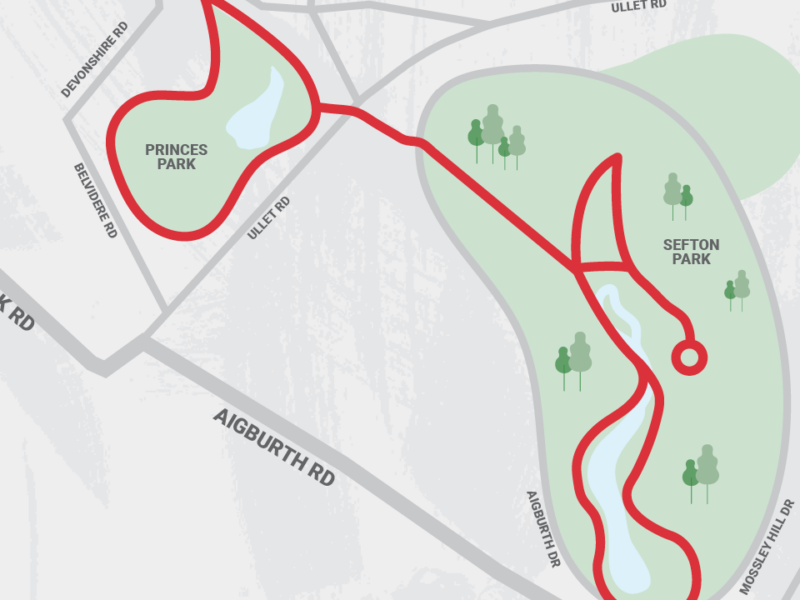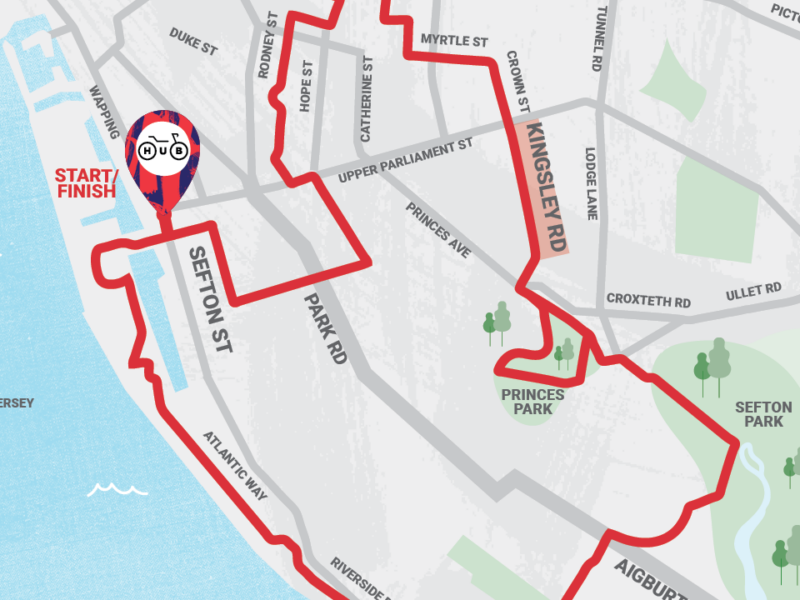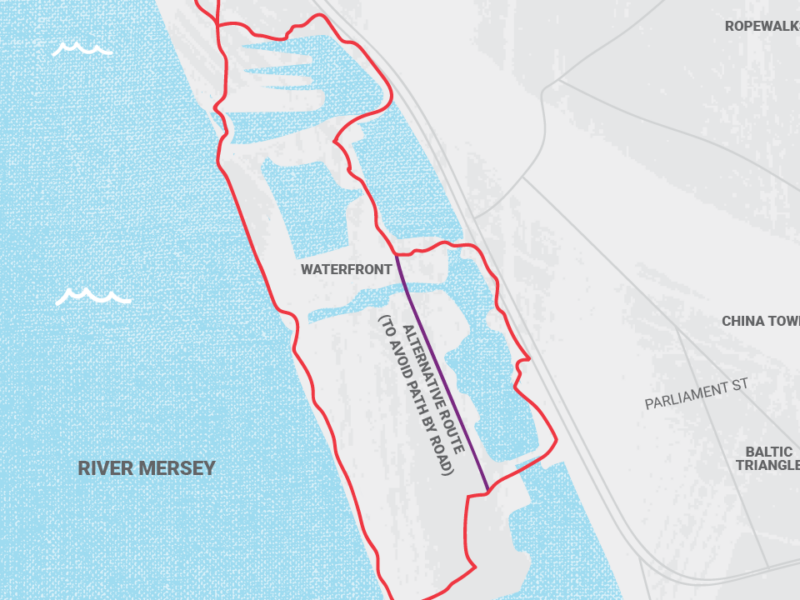Otterspool Route
Join us on a leisurely 12-kilometre heritage bike ride along Liverpool’s scenic riverside walkway, taking in fascinating historical landmarks like Coburg Dock, Brunswick Dock, and the iconic Festival Gardens.
This flat route is perfect for all fitness levels and offers a unique glimpse into Liverpool’s rich maritime past, from the birthplace of transatlantic trade to sites that have been key to the city’s regeneration. The ride culminates at Otterspool Park, where you can enjoy the serene surroundings before heading back to 5 Sefton Street.
This 1-hour round trip is a fantastic way to explore Liverpool’s waterfront, learn about its historical significance, and enjoy some gentle exercise. Whether you’re a history buff or just looking for a peaceful ride by the river, this experience offers a blend of culture, nature, and fitness. Ideal for cyclists of all levels, it’s a great opportunity to connect with the community while discovering hidden gems along the Mersey.
Distance: 11.98 km / 7.4m
Time: estimated 1 hour
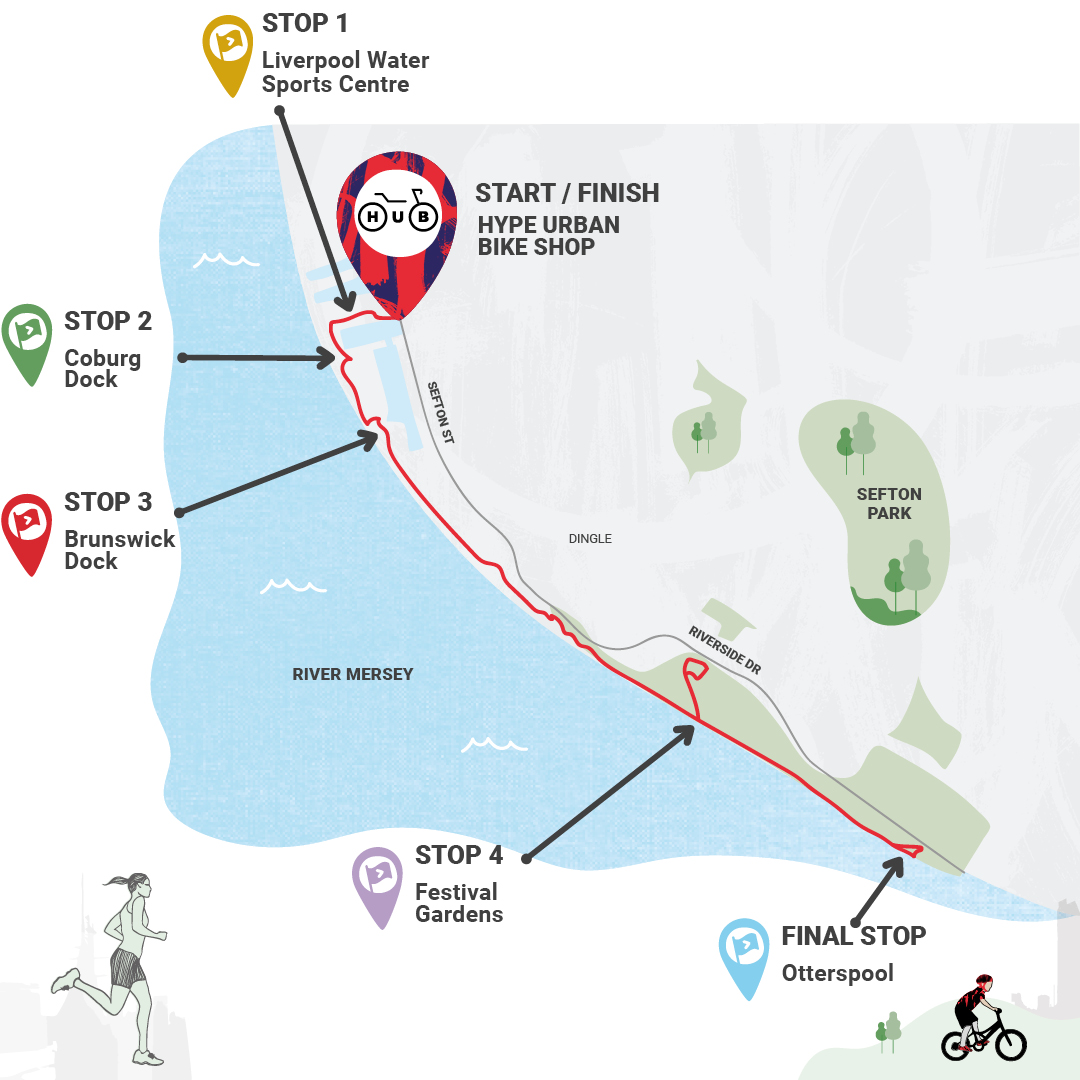
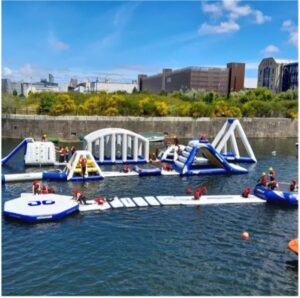
Liverpool Water Sports Centre is a part of the charitable organization called Local Solutions, which focuses on helping disadvantaged groups in Liverpool and North Wales. HYPE, our charity, collaborates closely with the Water Sports Centre to offer underprivileged young people the chance to participate in new activities and become part of a community. This project was initially established on the banks of the Leeds-Liverpool Canal in 1979 and was relocated here in 1994 to provide a wider range of activities to the entire community. The Centre offers a variety of activities, including sailing, kayaking, and inflatable obstacle courses.
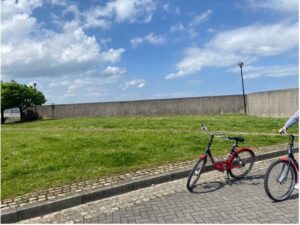
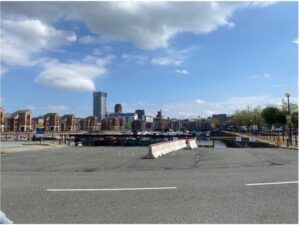
At Coburg Dock, the first Cunard transatlantic passenger trade between Liverpool and New York occurred. The 1,500-ton ship, RMS Britannia loaded up with cargo here on the 4th July 1840. In January 1842 Charles Dickens and his wife travelled to the United States on Britannia. On Cunard steam ships Cows were kept on board for fresh milk every day and were slaughtered to be eaten on the final day of each voyage. The Cunard building still stands today and is located by the docks. In 1870, Cunard introduced the first flushing toilets at sea!
Between 1830 and 1930, 9 million emigrants from Britain, Ireland and Europe set sail from Liverpool to begin a new life in America. Along the Riverside walkway, there is a statue of a young emigrant family to recognise this great mass migration.
During this mass immigration to America, Cunard steamships brought over a million of the 2.5 million people choosing to settle in the US.
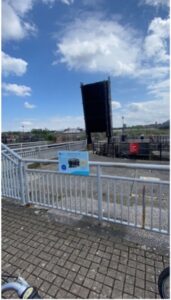
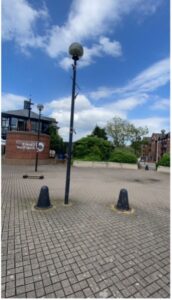
This Dock was constructed in 1832 by Jesse Hartley, the same man who built the Albert Dock. At the time, it was the biggest dock in Liverpool, covering an area of 12.5 acres. This dock was specifically built for handling timber imports, mainly from New Brunswick, Liverpool. It closed in 1975 and was redeveloped into housing and a marina during the 1980s.
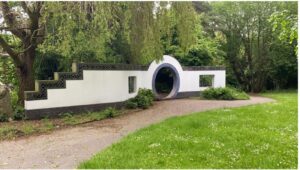
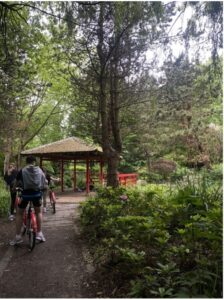
These gardens used to be a former landsite, until 1984 when it was redeveloped to host the International Garden Festival launched by Queen Elizabeth II. The International Garden Festival was a concept designed to regenerate Liverpool and drive tourism following the huge industrial decline and Toxteth riots. The festival was a success attracting 3.4 million visitors.
The gardens consisted of 25 acres of Oriental Gardens. When the festival was over, many of the gardens were redeveloped to form residential housing. The remaining gardens were left derelict in 1997. In 2010 redevelopment work took place to restore the gardens.
One public piece of the art from the festival that endured is the Yellow Submarine which was built as a tribute to The Beatles. In 2005, after the model was restored and renovated, the Yellow Submarine was moved to Liverpool John Lennon Airport where it remains to this day.
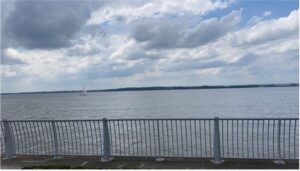
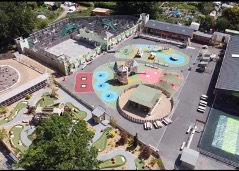
The area known as Otterspool derives its name from the otters that used to inhabit the tidal creek and freshwater pools formed where a stream joined the River Mersey. In the past, this site was utilised as a storage area for rocks that were excavated during the construction of the Mersey Tunnel.
However, thanks to the recent ‘Pride in Our Proms’ project, Otterspool has undergone a significant renovation. The site now boasts an array of new features, including an attractive children’s play area and a trim trail. These additions make Otterspool an ideal destination for families looking to enjoy a fun day out in the fresh air and sunshine.
You can also enjoy the stunning views of the Clwydian Hills in North Wales.
Join a Ride
Signup form for bike rides

